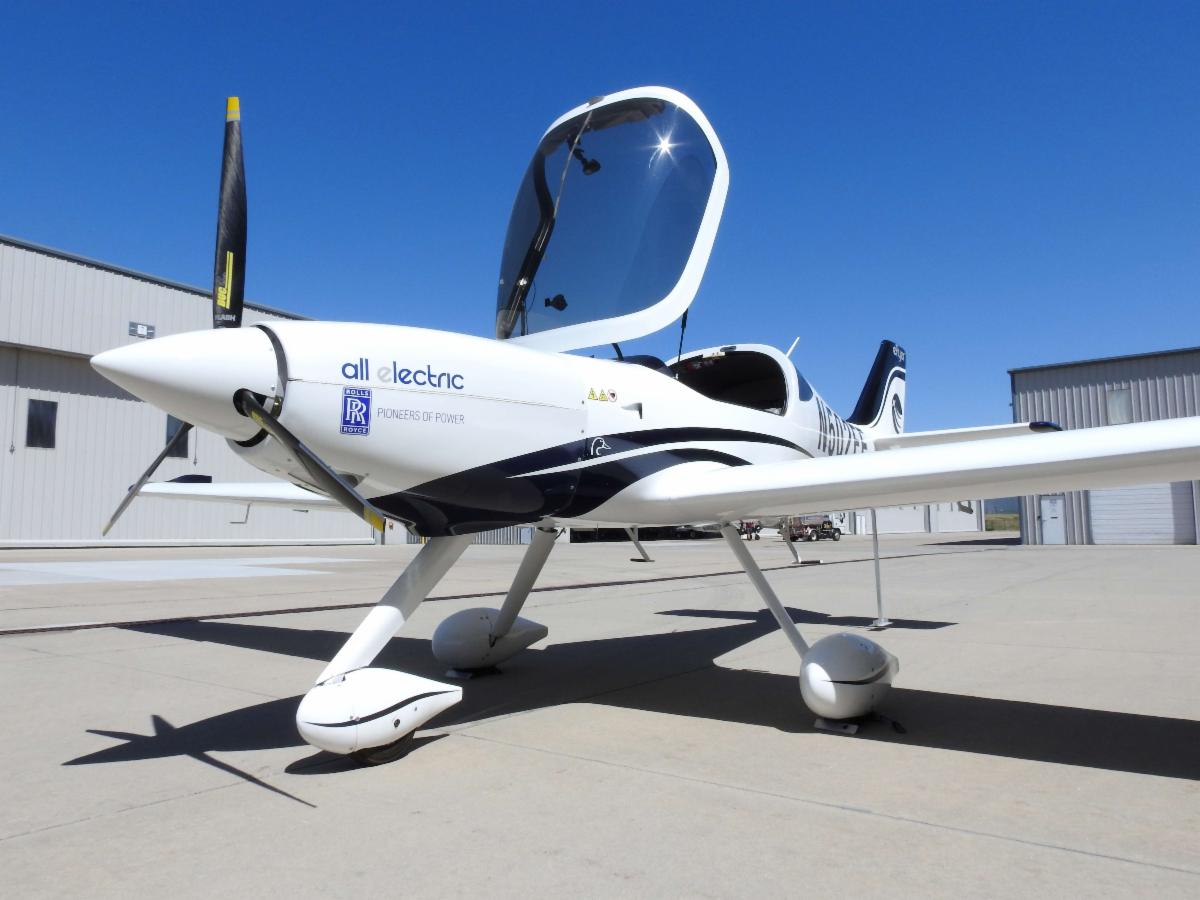
Bye Aerospace has begun the next phase of its flight test program for the company’s two-seat all-electric eFlyer 2 technology demonstrator, according to a press release. George E. Bye, CEO of Bye Aerospace, said the flight test program is focused on collecting flight envelope engineering data for the three propellers being considered for the FAA-certified production version of eFlyer 2. The criteria for selecting the confidential propeller finalists included the lightweight requirement along with the aerodynamic design evaluated against the eFlyer 2’s flight training mission.
Bye explained, “Data from these tests will help our engineering team determine the most efficient propeller that will maximize the overall efficiency for the typical flight training syllabus requirement.”
He continued, “The prototype Rolls Royce electric motor currently on the eFlyer 2 technology demonstrator has varying torque and a large RPM range with a relatively small size and cross-section compared to a conventional internal combustion engine. Therefore, more of the propeller length is available to provide thrust across a broad range of RPM. So we will be conducting flight tests with the various propellers over the summer against these beneficial and unique electric propulsion criteria.”
In addition to return to flight testing, Bye said the Critical Design Review for eFlyer 2, a significant milestone in the FAA Part-23 certification process, was completed on June 5th. “The Covid-19 pandemic has forced Bye Aerospace to communicate and collaborate remotely like everyone else, but we have continued to move forward in our certification process as safely, economically, and efficiently as possible,” Bye said. “During this series of flight tests in particular, we are closely managing the number of participants to observe social distancing and other recommended safety practices.”
Bye Aerospace’s eFlyer family of aircraft, including the two-seat eFlyer 2 and the four-seat eFlyer 4, aims to be the first FAA Part 23-certified, practical, all-electric airplanes to serve the flight training, air taxi and general aviation markets.
For visual information

